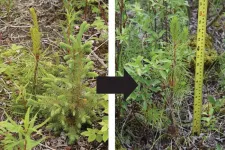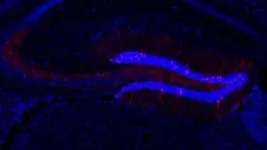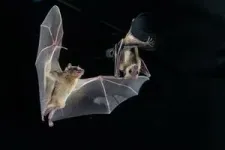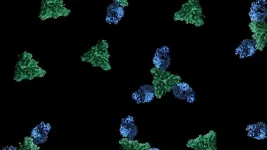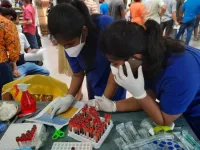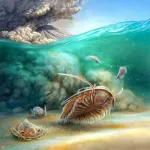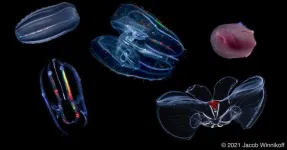(Press-News.org) The Ecological Society of America (ESA) presents a roundup of four research articles recently published across its six esteemed journals. Widely recognized for fostering innovation and advancing ecological knowledge, ESA’s journals consistently feature illuminating and impactful studies. This compilation of papers explores the potential for pines to establish in pine-free interior Alaska, internet sleuthing to assess birds’ extinction risk and more, showcasing the Society’s commitment to promoting cutting-edge research that furthers our understanding of the natural world.
From Ecological Applications:
Lodgepole pine staking a claim to Alaska’s boreal region
Author contact: Xanthe J. Walker (xanthe.walker@nau.edu)
Shifts in species ranges driven by ongoing climate change are perhaps nowhere more evident than in the rapidly warming northern latitudes of the world. In this study, researchers used a combination of field experiments and model simulations to assess the susceptibility of Alaska’s boreal forests, where pine trees are currently absent, to colonization by lodgepole pine from forests in the neighboring Yukon Territory. They found that lodgepole could readily establish across their field sites as environmental conditions become increasingly suitable with little resistance from natural checks like browsing by moose and hare and competition from native trees. Based on their results, the authors warn that lodgepole pine could become widely distributed throughout the boreal regions of Alaska as natural constraints on their distribution wane under future climate conditions, resulting in a fundamental shift in ecosystem structure with considerable ecological, socioeconomic and cultural ramifications.
Read the article: Factors limiting the potential range expansion of lodgepole pine in Interior Alaska
A recipe for more deer in Washington state
Author contact: Taylor R. Ganz (taylorganz@gmail.com)
White-tailed deer in northeastern Washington State are vulnerable to apex predators and vehicle collisions on roads, but they also benefit from areas opened by timber extraction and agriculture according to the authors of this study. Analysis of radio-collar data from 280 deer revealed that predators—particularly cougars—had a marked effect on deer numbers. However, substantial increases in edible vegetation in recently logged areas, farmland and ranches boosted deer abundance and played an even larger role in driving deer population growth when compared to predation. Consequently, the authors propose that strategies promoting greater availability of forage would be the most effective approach for increasing white-tailed deer in the state. Moreover, a substantial portion of the tracked deer were killed by cars and trucks on the region’s roads, leading the authors to recommend actions to reduce deer-vehicle collisions—for both humans’ and deer’s sakes.
Read the article: White-tailed deer population dynamics in a multipredator landscape shaped by humans
From Ecosphere:
Honey bee pathogens are a bumble bee buzzkill
Author contact: Heather M. Hines (hmh19@psu.edu)
A new study suggests that honey bees may be serving as a winter reservoir of viral pathogens that go on to infect common eastern bumble bees in spring. Although parasite prevalence is relatively high in both bees in summer, loads decline to negligible levels in overwintering bumble bees. In contrast, honey bees appear to be less adept at ridding themselves of these nuisances and they maintain higher viral loads during the wintertime. Come spring, the larger parasite load carried by honey bees through the winter can then be passed to bumble bees. The findings have important ecological implications but may also aid in the development of more effective management strategies aimed at improving the survival of these indispensable pollinators.
Read the article: Comparison of seasonal viral prevalence supports honey bees as potential spring pathogen reservoirs for bumble bees
From Frontiers in Ecology and the Environment:
Looking online for long-lost birds
Author contact: Cameron L. Rutt (cameronrutt@gmail.com)
Catalogs of data collected by hobbyists and amateur scientists (both skilled and novice) on the world’s birds are now so extensive that they can serve as a reliable index of extinction risk, propose the authors of this new study. Analysis of 42 million photographic, audio and video records uploaded to popular online platforms like eBird and iNaturalist revealed that 144 (1.2%) of the nearly 12,000 known avian species across the globe meet the criteria of “lost,” which the authors define as the absence of solid documentation for more than a decade. Moreover, they suggest that the length of time since the last record of a species, combined with the collective effort spent searching for it, reflect a bird’s odds of being imperiled. Based on this measure, the researchers estimated that nearly 62% of the “lost” species are likely gone for good. The study highlights the value of these so-called citizen science or community science platforms, for biodiversity writ large.
Read the article: Global gaps in citizen-science data reveal the world’s “lost” birds
###
The Ecological Society of America, founded in 1915, is the world’s largest community of professional ecologists and a trusted source of ecological knowledge, committed to advancing the understanding of life on Earth. The 8,000 member Society publishes six journals and a membership bulletin and broadly shares ecological information through policy, media outreach and education initiatives. The Society’s Annual Meeting attracts 4,000 attendees and features the most recent advances in ecological science. Visit the ESA website at https://www.esa.org
Follow ESA on social media:
Twitter/X – @esa_org
Instagram – @ecologicalsociety
Facebook – @esa.org
END
A year of treatment with a medicine made of an antibody and chemotherapy drug has proven highly effective in preventing stage 1 HER2-positive breast cancer from recurring in patients, a team led by Dana-Farber Cancer Institute researchers has found.
In a clinical trial involving 512 patients with the earliest stage of breast cancer that tested positive for the HER2 protein, 97% of those treated with trastuzumab emtansine (T-DM1) after surgery were alive and free of invasive cancer five years after treatment. The results, published online today in the Journal of Clinical Oncology, suggest that T-DM1 is a reasonable treatment approach for this stage 1 population, the study authors ...
Ephemeral streams – temporary streams that only flow after rainfall or snowmelt – contribute more than 50% of the flow in downstream river systems and likely have a major influence on water quality across the United States, according to a new modeling study. The findings show how important ephemeral streams are for the transport of water and pollution into larger, more permanent water bodies. Excluding these streams from coverage under the U.S. Clean Water Act, say the authors, would significantly limit federal authority to protect downstream water quality. Ephemeral streams, which flow only in direct response to precipitation and are disconnected from groundwater sources, ...
Thanks to being rapidly entombed in volcanic ash – in a “Pompeii-like” process – Cambrian-age trilobites’ anatomy is more discernable than ever, via exquisitely preserved fossils. The fossils uncovered in Morrocco are reported in a new study that reveals microscopic details including of trilobite appendages and the trilobite digestive system. Trilobites are perhaps the most well-known creatures that lived during the Cambrian Period. These extinct marine arthropods’ hard exoskeleton lends itself to high fossilization potential, facilitating the identification of more ...
In a new study in mice, researchers introduce “CHARM,” a compact and versatile epigenetic editor that can be used to silence prion protein throughout the brain. The tool provides a path towards an effective first-line treatment for patients with deadly prion disease as well as other neurodegenerative diseases caused by the toxic buildup of unwanted proteins. Prion disease – a suite of devastating neurodegenerative disorders that result in rapid-onset dementia and death – is caused by misfolding of the prion protein, PrP, to form toxic aggregates that result in neuronal death. Previous research in mice has shown that removing PrP ...
LA JOLLA, CA—What happens when measles virus meets a human cell? The viral machinery unfolds in just the right way to reveal key pieces that let it fuse itself into the host cell membrane.
Once the fusion process is complete, the host cell is a goner. It belongs to the virus now.
Scientists in the La Jolla Institute for Immunology (LJI) Center for Vaccine Innovation are working to develop new measles vaccines and therapeutics that stop this fusion process. The researchers recently harnessed an imaging technique called cryo-electron microscopy to show—in ...
The most obese children with dengue are more than twice as likely as others to be hospitalized with dengue, according to study of 4,782 10- to 18-year-olds in Sri Lanka.
####
Article URL: http://journals.plos.org/plosntds/article?id=10.1371/journal.pntd.0012248
Article Title: Is the rise in childhood obesity rates leading to an increase in hospitalizations due to dengue?
Author Countries: Sri Lanka, United Kingdom
Funding: This study has been supported by the World Health Organization Unity Studies (GNM and CJ), a global sero-epidemiological standardization initiative, with funding to the World Health Organization and the UK Medical Research Council (GSO). The World Health Organization ...
Researchers have described some of the best-preserved three-dimensional trilobite fossils ever discovered. The fossils, which are more than 500 million years old, were collected in the High Atlas of Morocco and are being referred to by scientists as “Pompeii” trilobites due to their remarkable preservation in ash.
The trilobites, from the Cambrian period, have been the subject of research by an international team of scientists, led by Prof Abderrazak El Albani, a geologist based at University of Poitiers and originally from Morocco. The team included Dr Greg Edgecombe, a palaeontologist ...
CAMBRIDGE, MA — Researchers from MIT and the University of Michigan have discovered a new way to drive chemical reactions that could generate a wide variety of compounds with desirable pharmaceutical properties.
These compounds, known as azetidines, are characterized by four-membered rings that include nitrogen. Azetidines have traditionally been much more difficult to synthesize than five-membered nitrogen-containing rings, which are found in many FDA-approved drugs.
The reaction that the researchers used to create azetidines is driven by a photocatalyst that excites the molecules from their ground energy state. Using computational models that they developed, the researchers ...
Plants are powerhouses of molecular manufacturing. Over the eons, they have evolved to produce a plethora of small molecules — some are beneficial and valuable to humans, others can be deadly. For years, a good way for scientists looking for new medicines to distinguish beneficial plant-derived molecules from harmful ones has been through a scientific sniff test — dab a bit of the molecule at one end of a petri dish and drop tiny nematode worms (C. elegans) at the other, then wait to see if the chemically sensitive worms move toward or away from the compound in question, a process known as chemotaxis.
This “artisanal” ...
The bottom of the ocean is not hospitable: there is no light; the temperature is freezing cold; and the pressure of all the water above will literally crush you. The animals that live at this depth have developed biophysical adaptations that allow them to survive in these harsh conditions. What are these adaptations and how did they develop?
University of California San Diego Assistant Professor of Chemistry and Biochemistry Itay Budin teamed up with researchers from around the country to study the cell membranes of ctenophores (“comb jellies”) and found they had unique lipid structures that allow them to live under intense pressure. Their work appears in Science.
Adapting ...
